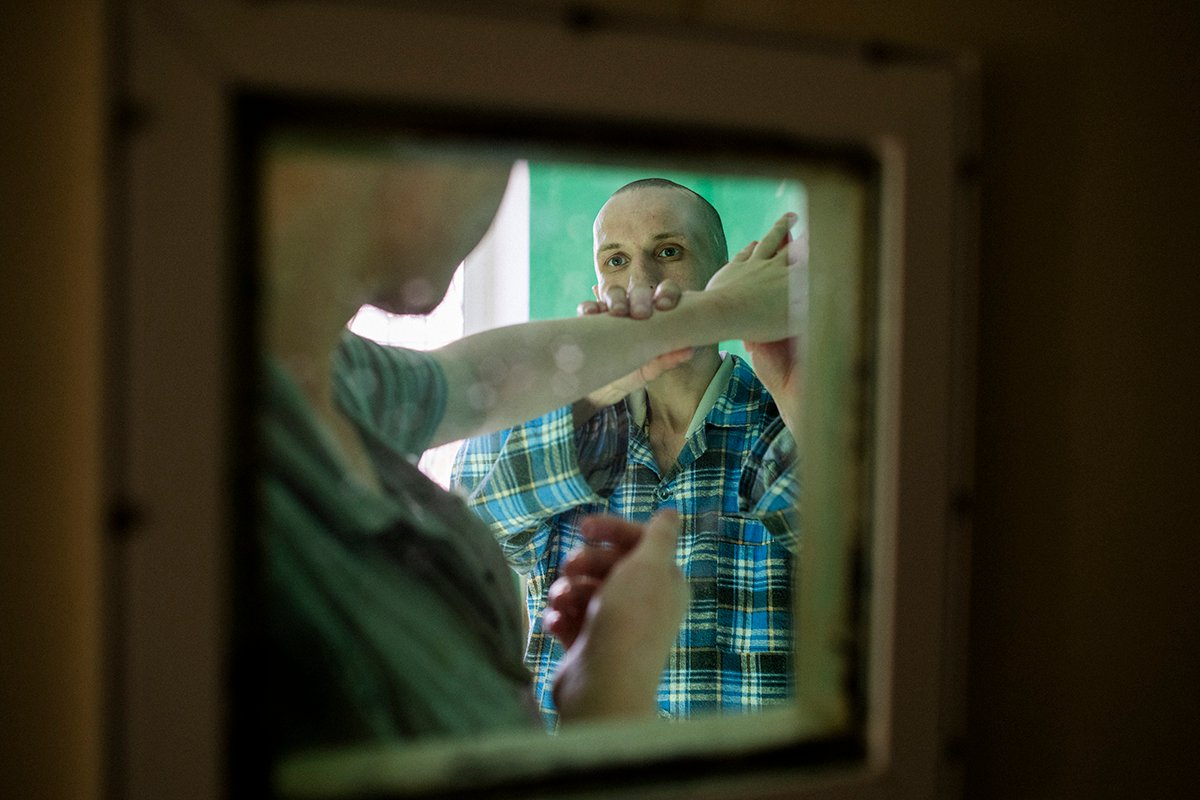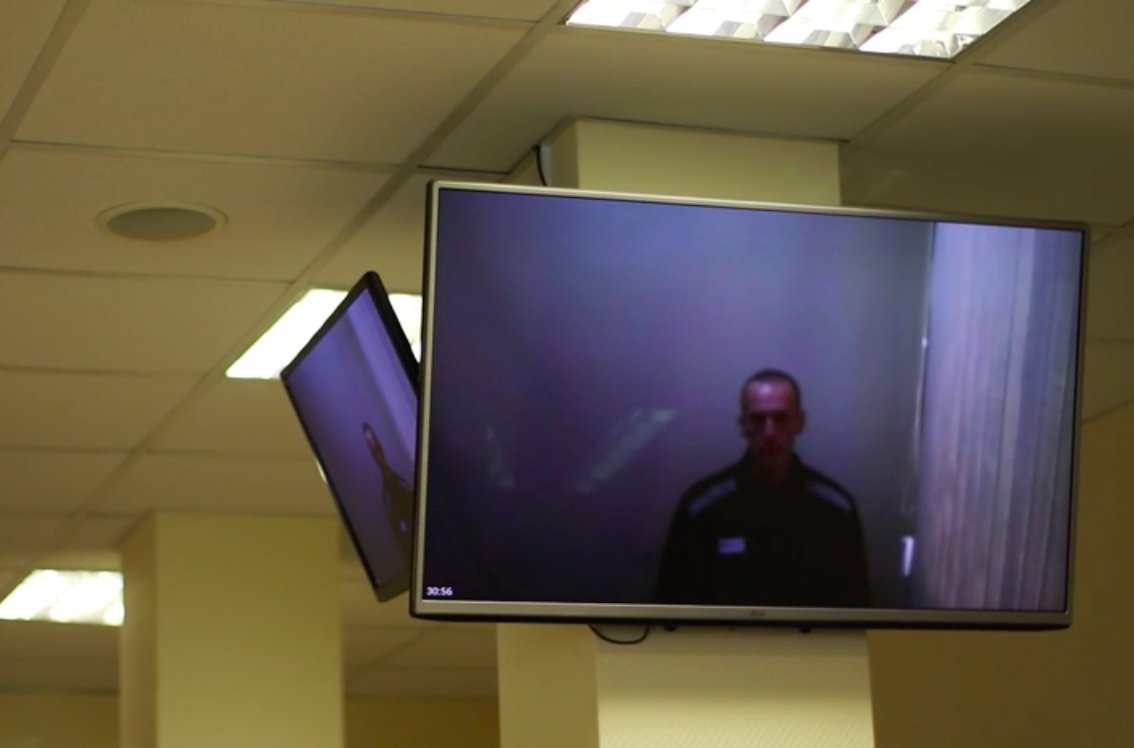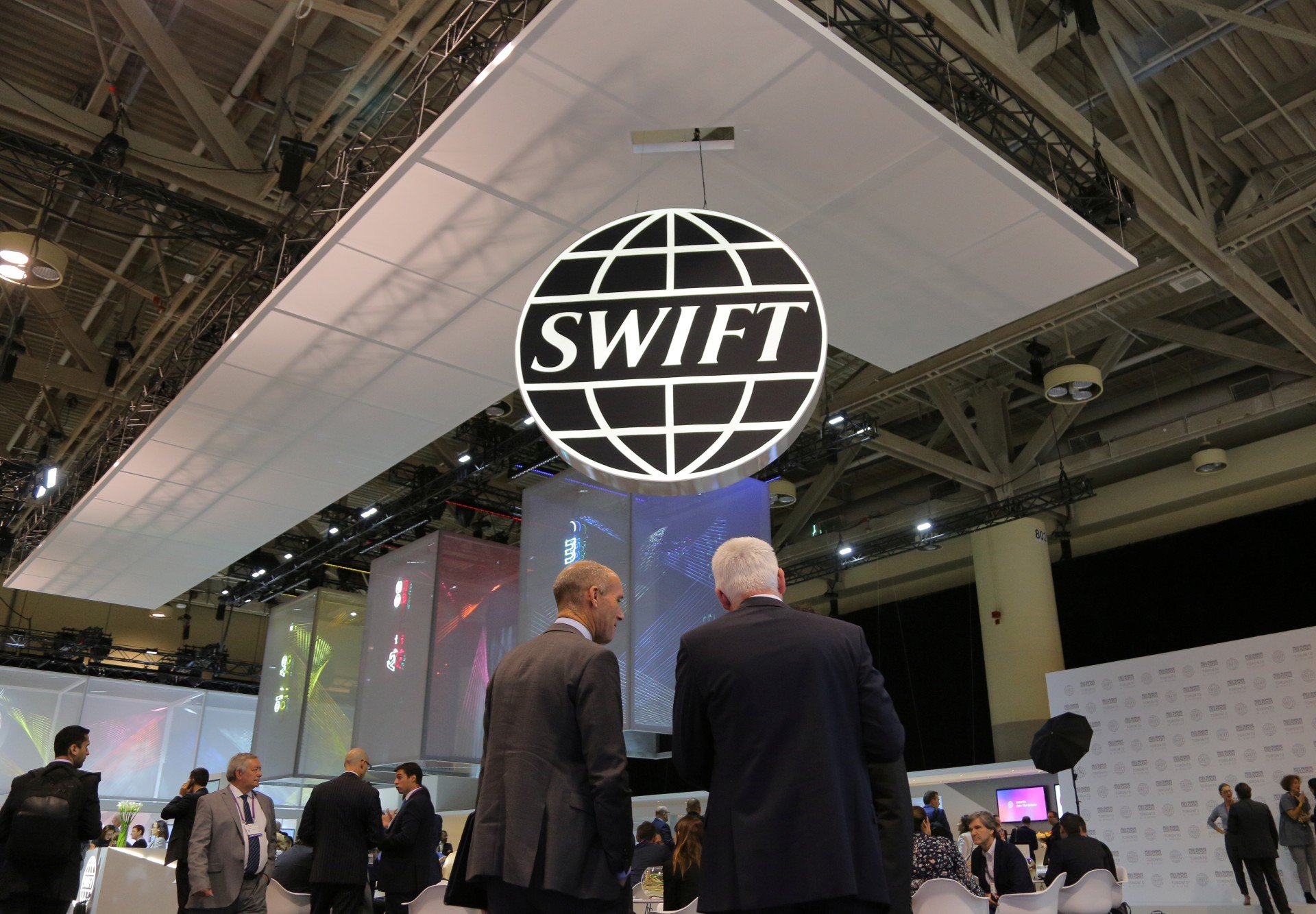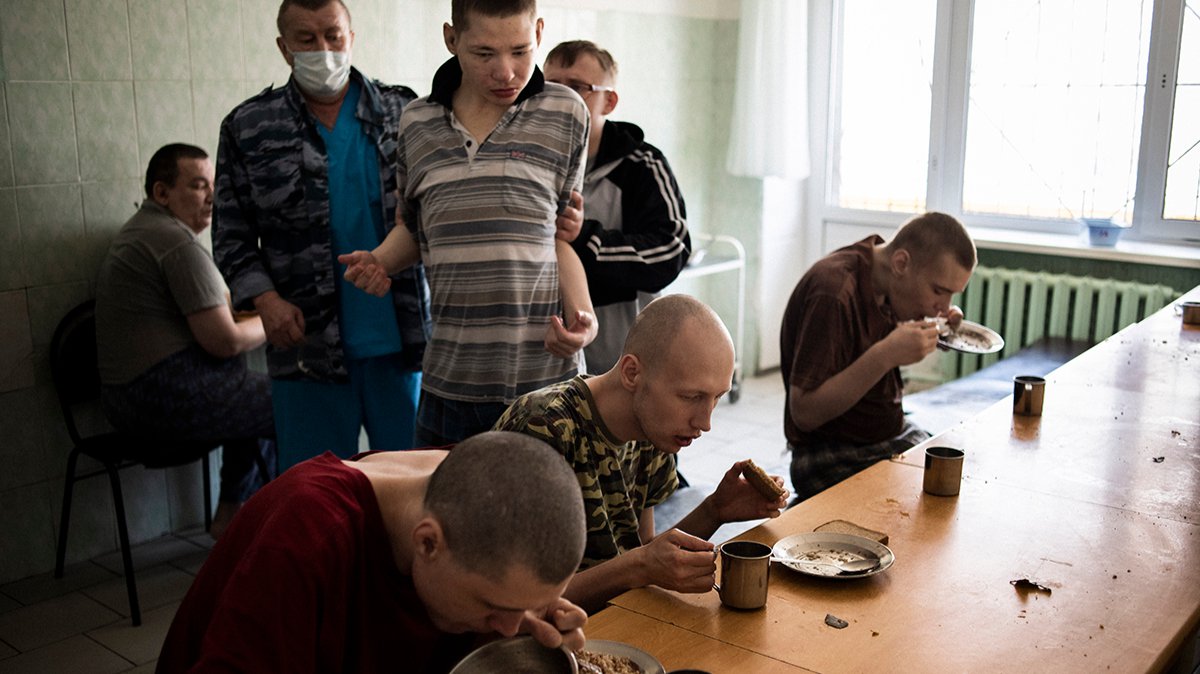Here what’s in store for you this week:
- This week we bring you a rare dispatch from inside one of Russian mental institutions, where we find the patients abandoned, drugged and sterilised;
- We explore the Kremlin’s plan for setting up what looks like a ‘new gulag’;
- We ask independent experts whether or not banning Russia from the SWIFT system will have a desired impact. Spoiler: few think so;
- Plus, we report on rapid man-made deforestation on the outskirts of Moscow.
Want to get the full story? Click the links below for full-length articles in Russian.
The Nightmare of Russian Mental Asylums, Exposed
We were astonished that officials recently granted us access to a Russian psychiatric ward. The situation in them is so hopeless that authorities have simply ceased to care. The deal was simple: our special correspondent Elena Kostyuchenko and photographer Yuri Kozyrev were allowed to spend two weeks living in the institution. In exchange, we keep the asylum and patients’ real names off-the-record. In many countries, similar institutions ceased to exist years ago, after practices employed on the premises came to be regarded as tantamount to neglect and abuse. However, in Russia, tens of thousands still live in these so-called psychoneurological ‘care’ homes (PNIs.) In those two weeks, our correspondents “barely scratched the surface of hell”, they said.
“THE FIRST THING YOU FEEL IS THE STENCH. It is a mix of the smell of food, urine, oil, bleach, and human sweat,” Kostyuchenko writes. The residents, or patients, struggle with a broad spectrum of mental illnesses, some severe and some less so, with only seven social workers serving more than 430 of them in this care home alone. Each resident has their own individual care needs, and not all diagnoses are correct. However, “they are united by the fact that they were abandoned by their loved ones. Their social ties have been damaged or weakened to the point of disintegration,” Kostyuchenko observes. She records a wide variety of scenarios from community, grim conflict, affection, and aggression between the people staying around her in one of the most heartbreaking dispatches we've published in recent months.
LIKE A CONCENTRATION CAMP. Women’s heads are forcibly shaved, disobedient patients are injected with chlorpromazine or fed other medications, and are hosed down like dirty cattle. People are not informed about which pills or injections they are being given, and those who wonder about it are too afraid to ask.
“Employees have the broadest interpretations of incapacity. The incapacitated person cannot determine the length of their own hair … The incapacitated person cannot decide what is stored in their bedside table … A disabled person can wash floors or unload food, but cannot receive a salary for this,” Kostyuchenko reports.

FORCED STERILIZATION. Kostyuchenko also reports signs of forced sterilization of female patients at the institution. “On their stomachs — white scars. One — transverse and thin as occurs with a c-section. Two — longitudinal, rough, and wide, with traces of stitches,” Kostyuchenko writes about two women she encountered at the asylum bearing such scars. Alina and Vera were sterilized after their unborn children were aborted five months into their pregnancies. “It happened to Alina in 2007 and to Vera — in 2016. Alina was 21 years old, Vera was 30 years old,” says Kostyuchenko. Neither were given any choice about their reproductive future.
“They sent me to the hospital. They did an ultrasound scan, but they didn't even tell me whether it was a girl or a boy… They didn't ask me anything at all. Not a thing. I didn't sign anything. They put something on my finger, an IV in my vein — and I fell asleep,” Alina shared with our reporters.
BACKSTORY. There are 155,878 Russian currently in PNI psychiatric homes. Among them are some 21,000 children doomed to spend their lives there. Russian mental asylums are a hangover from the Soviet healthcare system, where mental illnesses were often stigmatized, deprioritized, and punitive psychiatry prevalent based on a patient’s political views. Abuse and neglect in such institutions were endemic, and these practices persist today. Oversight in Russian mental asylums is non-existent, and the basic human rights of the patients are often violated or denied. Russia’s healthcare system has a limited capacity to cater to such institutions, so the cramped conditions resemble prison cells or military barracks. Staffing levels are inadequate, and there have been reports that electro-convulsive therapy (ECT) continues to be used in some, as well as mechanical restraints. The pandemic and unsuccessful reforms have brought the Russian healthcare system to the brink of collapse in the past year, aggravating the dire situation in the already-sidelined PNI institutions.
Read the extensive, heartbreaking report on Russia’s PNI homes here.
Russia’s ‘New Gulag,’ Explained
While Russia’s most famous political prisoner Alexei Navalny was busy losing another court battle to the state last week, the Russian government floated the prospect of using convicts as forced labor to aid a flagging national railroad project. Many are drawing parallels with the Soviet gulag system where the Kremlin sent dissidents to labor camps. Our columnist Alexey Tarasov assesses the fairness of such a harsh comparison.

Поддержите
нашу работу!
Нажимая кнопку «Стать соучастником»,
я принимаю условия и подтверждаю свое гражданство РФ
Если у вас есть вопросы, пишите donate@novayagazeta.ru или звоните:
+7 (929) 612-03-68
WILL NAVALNY BE SENT TO BUILD BAM? Russia’s Baikal-Amur Mainline railway (BAM) railway project is experiencing an acute shortage of personnel. The 6 trillion rubles ($79 billion) project is suffering as a combined result of the sheer scale of work required and simultaneous lack of foreign labor migrants, who were effectively banned from the country during the COVID-19 pandemic. The construction of BAM, which was set to last until at least 2030, now faces an uncertain future. The government has started to entertain the idea of replacing foreign migrants with an army of Russian convicts. Luckily for them, the supply would be almost unlimited — the country has one of the highest incarceration rates globally (26th ) and the fourth largest prison population (half a million inmates). The final decision is due on May 14. While Tarasov believes this is not necessarily a new gulag, there are some striking similarities in the general idea.
“One cannot fail to notice one thing — repressive political trends always go hand in hand with economic ‘megaprojects,’” he says. “Stalin invented great construction projects to occupy the people in the camps (as well as to dissolve the opposition, prepare people for war and communism, etc.),” Tarasov writes in this week’s op-ed.
AN ALTERNATIVE TO PRISON TIME? The Federal Penitentiary Service (FSIN) has stated that working on BAM could become an alternative to spending time in a prison colony. “After serving a certain term, incarcerated prisoners of positive character have the right either independently or through a lawyer to submit a petition to the court to replace imprisonment with forced labor,” FSIN’s Elena Korobkova told state news agency TASS. Tarasov, with a degree of resignation, senses that the situation is unavoidable by now. He points out that the Russian penitentiary system already makes billions on the free labor of Russian prisoners (compensating them with abuse and horrific living conditions). “The experiment began in 2014; now it is already a ubiquitous, harsh reality,” he notes.
GREED, AS ALWAYS, IS THE REASON. The money issue is at the very root of the Kremlin’s drive to squeeze more forced labor out of the burgeoning prison population, Trasov thinks. “We have built our own economy with Russian peculiarities, using the internet and cast iron, with billionaires and slavery, with yachts of oligarchs, coalesced from prisoners’ veins,” he says, instead comparing the system to modern slavery.
Read Tarasov's full op-ed on Russia’s ‘new gulag’ here.
Impact of Possible SWIFT Ban, Examined
To disconnect Russia from SWIFT, or to not disconnect? This question pops up every time the international community mulls a new round of international sanctions against Russia. Considering the exceptional weakness of the U.S. government's latest batch, we focus on what a more impactful alternative might have looked like this week. Switching Russia off the leading financial messaging network that empowers international bank transfers is often discussed but never deployed. Could it work, though?
MORE TARGETED FINANCIAL SANCTIONS AGAINST KREMLIN GAIN MOMENTUM. Specifically, the U.K. has just added 14 Russian citizens to the anti-corruption sanctions list. In the opinion of U.K. authorities, they are connected to the Magnitsky case. This was bad news for wealthy Kremlin elites that had become used to laundering their assets in London. Corrupt foreigners can “no longer use” the country for money-laundering, warned Foreign Secretary Dominic Raab. Although it will take thousands of additional Russian names on the sanctions list to make Raab’s statement remotely true, the momentum in favor of ramping up sanctions is, nevertheless, increasing.
SWIFT BAN IS NEXT? EUROPEAN PARLIAMENT BACKS THE IDEA. Members of the European Parliament (MEPs) demanded a SWIFT ban for Russia in a resolution adopted by a staggering majority of 569 vs. 119 last week. In all history, only Iran and North Korea have been entirely disconnected from SWIFT. But the imprisonment of Alexei Navalny and the recent military buildup in eastern Ukraine, not to mention attacks in Czechia all fit the bill, the European Parliament suggests. “If such a military buildup were in the future to be transformed into an invasion of Ukraine by the Russian Federation, the E.U. must make clear that the price for such a violation of international law and norms would be severe; insists, therefore, that in such circumstances imports of oil and gas from Russia to the E.U. be immediately stopped, while Russia should be excluded from the SWIFT payment system,” the statement noted.
SWIFT BAN WILL BE INCONVENIENT FOR KREMLIN ELITES. BUT NOT AN ARMAGEDDON. If enacted, the ban would only prompt the Kremlin to seek ways to circumvent it and disadvantage its international partners, argues Sergei Aleksashenko, a prominent Russian economist, former deputy governor of the Russian central bank, and ex-chairman of Merrill Lynch Russia. “Russian banks disconnected from SWIFT … will contact their partner banks in some new way. Our institutions’ corresponding banks abroad will have to hire personnel and install equipment. All this will increase the cost of payments. But there will be extensive additional costs on both sides,” Aleksashenko adds.

IMPENDING OIL PRICE SHOCK WILL WRECK KREMLIN INCOMES WORSE THAN A SWIFT BAN. Our economics columnist Maxim Averbukh points out that the pandemic has put an end to the era of growing global oil demand. “This is much scarier news for the Kremlin than any SWIFT restrictions,” Averbukh warns in this week’s op-ed. Moreover, facilitating alternatives to Russian gas flows to Europe is the Kremlin's worst nightmare, he adds.
“With Qatar and Australia, the United States can now, if necessary, replace more than half of Russian gas exports to Europe,” Averbukh writes. Limiting oil and gas imports and exports will be more than enough, rendering SWIFT system restrictions obsolete. “The implementation of such a threat will inflict such a powerful blow on our commodity economy that the shutdown of SWIFT against this backdrop will simply be imperceptible.”
BACKSTORY. The Kremlin's recent military flex on the Ukrainian border and the latest round of the U.S. sanctions against Russia once again brought the topic to the forefront. However, the relative weakness of U.S. measures could signal Washington’s refusal to walk the walk and maybe stick to a thus far unsuccessful ‘dialogue’ approach. On the other hand, the latest bout of U.K. sanctions were part of a cooperative measure introduced alongside the U.S. to tackle high-ranking Russian officials suspected of being involved in the war in eastern Ukraine, poisoning Sergey and Yulia Skripal, meddling in the American elections, cyberattacks, introducing bounty on American soldiers in Afghanistan, and complicity in the poisoning of Alexei Navalny, among other things. Key E.U. member states, including Germany, have so far resisted additional sanctions against Putin’s regime. Most notably, the Nord Stream II pipeline (which would be critical for the Kremlin) is on schedule for completion in the near-future. Since 2014, the U.S. and Europe have imposed numerous rounds of sanctions against Russia in response to various malign activities, including Russia's invasion of Ukraine, U.S. election interference, human rights abuses, and the use of chemical weapons.
Read the full interview with Aleksashenko here and Averbukh’s latest op-ed here.
Treat Yourself with a Bonus
Here is a selection of our other top stories that have been trending with Russians in the last week:
- THE STUMPS ARE NUMBERED
The Moscow region is experiencing wide-scale tree-felling and deliberate deforestation. Up to a quarter of all forests surrounding the capital are falling under threat, and some 200 hectares have already been destroyed. Residents allege that the trees are being cut down in a “cunning” fashion, leaving a strip of trees to make it seem like the entire forest is intact. A company called “TID 2008” appears to be responsible for the crisis. Novaya Gazeta’s Elizaveta Kirpanova and Vladimir Prokushev publish a dispatch from the region, a village called Shadrino, digging into both the concerns of the locals, the regional ecology, and the company in question.
- KIBBLE FOR YOUR SHOULDERS
Novaya Gazeta takes a close look at the different uniform designation and the various epaulette adornments tossed to lower-level officials to make them feel important. For every 10 thousand Russians, there are 163 officials, according to the Ministry of Finance — more than in China. Any uniform set requires seasonal variants, plus field and dress options, as well as shoes, with equipment costs ranging from 35,000 rubles — 55,000 rubles per person and higher ($460-$730). Almost every department has its own uniform and epaulettes, which need replacing too, meaning that government expenditure is extremely high, but hard to pinpoint exactly. Our Tatiana Britskaya deconstructs both the drain on the state, and the tier system embodied in the uniforms’ colours and markings, with a sprinkling of history.

CZECH BEER BAN?
Following Prague’s expulsion of 63 Russian diplomats and their families, Russian authorities are reportedly discussing a ban on imports of much-loved Czech beer. “We drank it in Moscow back in Soviet times, few people knew about it. You could drink it at the Czech embassy if you learned their language. We often went there,” a punter at one of Moscow’s foremost Czech bars tells our correspondent, Nadezhda Isayeva, joking that ‘they await government bulldozers.’
Поддержите
нашу работу!
Нажимая кнопку «Стать соучастником»,
я принимаю условия и подтверждаю свое гражданство РФ
Если у вас есть вопросы, пишите donate@novayagazeta.ru или звоните:
+7 (929) 612-03-68
